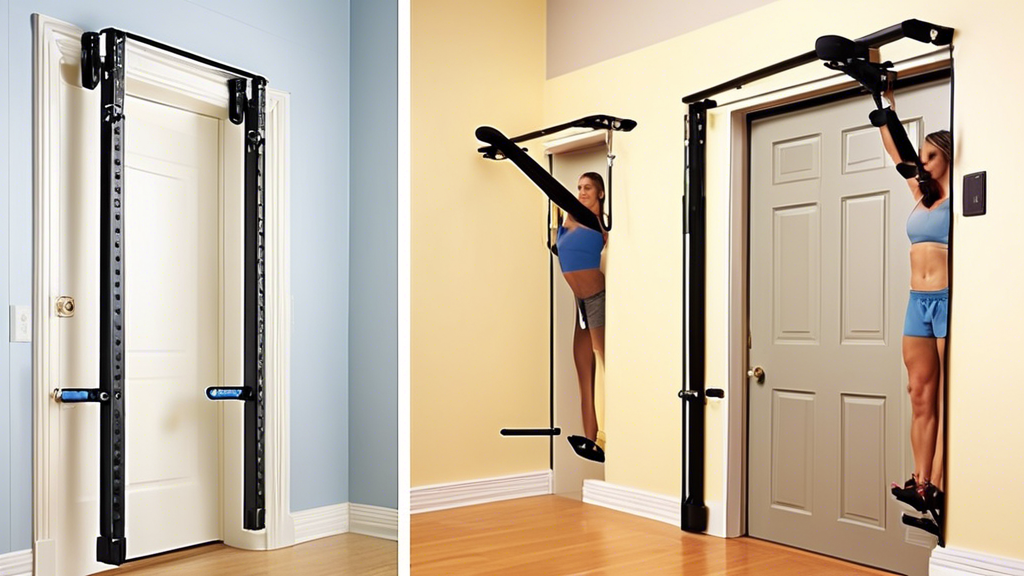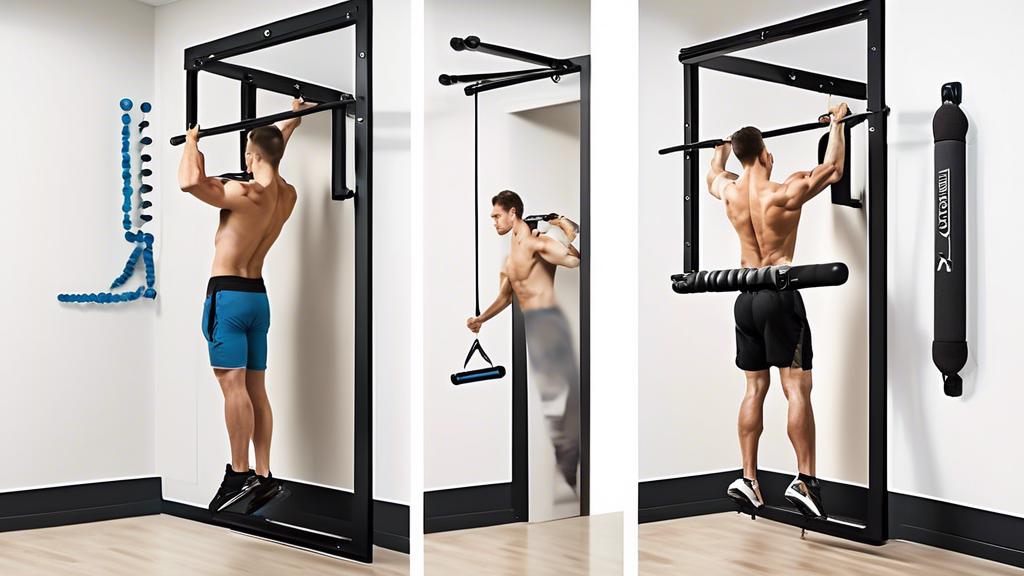In recent years, the convenience and effectiveness of home fitness bars have propelled them into the spotlight as essential equipment for home workouts. These versatile tools have become popular among fitness enthusiasts who seek a robust and flexible option for strength training without the need to visit a gym. Among the myriad of fitness bars available, wall-mounted and door-frame fitness bars stand out due to their distinct features and benefits. Understanding which type better suits your needs can be pivotal in maximizing your at-home workout experience.
Wall-mounted fitness bars are affixed directly to a stable wall, providing a reliable and sturdy anchor that supports a wide range of exercises, from pull-ups and chin-ups to leg raises and body stretches. Their main selling points include superior stability and the capacity to handle heavier weights, making them a sound choice for those looking to engage in more intense strength training. This setup, however, requires permanent installation and a dedicated space, which might not be suitable for all home environments.
On the other hand, door-frame fitness bars offer a more mobile and temporary solution, ideal for those who need flexibility in their workout spaces or live in rental properties where permanent modifications are not feasible. These bars are designed to fit securely onto standard door frames, making them easy to set up and dismantle as needed. While they might not offer the same level of stability as their wall-mounted counterparts, they are often sufficient for a variety of basic exercises and are generally more cost-effective.
In the battle between wall-mounted and door-frame fitness bars, several factors must be considered, including installation, space requirements, stability, safety, usability, versatility, cost, and durability. Each type presents its own set of advantages and potential drawbacks, which we will explore in detail to help you determine the best fit for your home workout routine.
Introduction to Wall-Mounted and Door-Frame Fitness Bars
Overview of the Popularity and Benefits of Using Fitness Bars for Home Workouts
In the realm of home fitness, fitness bars have become an essential piece of equipment for many, supporting a variety of workouts designed to build strength and muscle. The surge in their popularity can be attributed to the increasing desire for effective, space-saving solutions that deliver comprehensive workout options like pull-ups, chin-ups, and a range of bodyweight exercises. These bars have proven to be an optimal choice for fitness enthusiasts of all levels, from beginners to advanced athletes looking for a reliable tool to maintain or enhance their physical condition without needing to step foot in a gym.
One of the primary benefits of incorporating fitness bars into home workouts is their ability to target numerous muscle groups simultaneously. By engaging the upper body, core, and even the lower body through various exercises, fitness bars offer a full-body workout that promotes balanced muscle development. Their accessibility also plays a crucial role; with a fitness bar at home, individuals can perform quick, efficient workouts at their convenience, which is particularly useful for those with busy schedules. Additionally, fitness bars are relatively affordable and require minimal space, making them a wise investment for anyone looking to create a compact home gym setup.
Brief Introduction to Wall-Mounted and Door-Frame Fitness Bars, Highlighting Their Key Differences
When deciding to add a fitness bar to your home gym, you’ll encounter two main types: wall-mounted fitness bars and door-frame fitness bars. Each type has its distinctive features, mounting requirements, and suitability, all of which can influence your decision based on your specific needs and available space.
**Wall-Mounted Fitness Bars**
Wall-mounted fitness bars are designed to be securely attached to a wall. They typically offer a more permanent solution and provide a stable, robust structure capable of supporting significant weight. These bars are often preferred for their durability and the ability to withstand rigorous workouts. Installation usually involves drilling into the wall and securing the bar with brackets or mounts, making it essential to have a sturdy and suitable wall surface.
Key features of wall-mounted fitness bars include:
– High weight capacity, making them ideal for intense strength training.
– Stability that minimizes movement and ensures a safe workout environment.
– Versatility in mounting height, allowing customization based on user preference.
**Door-Frame Fitness Bars**
On the other hand, door-frame fitness bars are designed to fit within the frame of a door without the need for permanent installation. These bars are typically portable, easy to set up, and can be removed or relocated with minimal effort, making them an excellent choice for those who may not have a dedicated workout space or are renting and unable to make permanent modifications.
Key features of door-frame fitness bars include:
– Portability and easy installation, requiring no drilling or permanent alterations.
– Compact design that can be stored away when not in use.
– Adjustable and multi-functional designs that can often accommodate a range of exercises beyond just pull-ups, such as dips and leg raises.
Understanding the unique advantages and limitations of both wall-mounted and door-frame fitness bars is crucial in making an informed decision. The choice between the two will largely depend on factors such as available space, installation possibilities, and personal workout preferences. In the following sections, we will delve deeper into comparisons across various critical aspects to help you determine which type of fitness bar best fits your home fitness needs.

Detailed Comparison of Wall-Mounted and Door-Frame Fitness Bars
Installation and Space Requirements
The installation process for wall-mounted and door-frame fitness bars significantly differs. Wall-mounted fitness bars require drilling into the wall to secure brackets. This ensures a permanent and sturdy setup. Homeowners need to find a suitable wall space, preferably in a basement or garage, due to the need for robust wall studs to support the weight and pressure exerted during exercises.
On the other hand, door-frame fitness bars offer a more flexible and user-friendly installation. These bars typically hook over the top of a door frame, requiring no tools or permanent modifications. This makes them an ideal choice for renters or individuals who prefer not to alter their home structure. Door-frame bars can easily be removed and reinstalled as needed. However, they require a standard door frame size and a sturdy door trim to ensure stability.
When it comes to space requirements, wall-mounted bars demand a dedicated area in the home, limiting their placement options. Conversely, door-frame bars utilize existing doorways, making them more adaptable to smaller living spaces or apartments.
Stability and Safety
Stability and safety are crucial considerations when choosing a fitness bar for home use. Wall-mounted fitness bars generally offer superior stability due to their fixed installation. They are capable of supporting greater weight capacities, often exceeding 300 pounds, and can withstand more dynamic movements like kipping pull-ups. This makes them suitable for advanced fitness enthusiasts who perform a variety of exercises.
Door-frame fitness bars, while convenient, may not offer the same level of stability. Their support hinges on the strength and integrity of the door frame and trim. This can limit the weight capacity, typically around 200 to 250 pounds, and may restrict certain dynamic exercises to prevent damage. Users should regularly inspect their door-frame bar’s contact points to ensure that it hasn’t caused any wear or loosened from frequent use.
Although door-frame bars generally pose less risk to wall surfaces, they can potentially damage the door frame or trim with prolonged use. Conversely, improperly installed wall-mounted bars can cause significant damage to walls. Thus, ensuring proper installation and adherence to weight limits is essential for both types of fitness bars.
Usability and Versatility
Usability and versatility are crucial for home fitness bars, impacting the range of exercises an individual can perform. Wall-mounted bars provide extensive usability, accommodating a wide variety of exercises such as pull-ups, chin-ups, leg raises, and muscle-ups. Because of their fixed nature, they offer a stable platform for performing these movements.
Door-frame bars also support many exercises, including pull-ups and chin-ups. However, their versatility extends to easy relocation. For example, they can be moved to floor level to serve as a base for push-ups or dips, offering a different dimension to home workouts.
The ability to adjust or move door-frame bars makes them highly convenient for users with varying workout routines or those who might need to transition their workout space frequently. However, advanced movements or those requiring substantial body leverage may be better suited to the more stable structure of wall-mounted bars.
Cost and Durability
Cost and durability are also important considerations when investing in fitness equipment for home use. Wall-mounted fitness bars often come at a higher price point due to their robust construction and necessary installation hardware. They are typically built from high-quality steel, ensuring durability and longevity, making them a valuable long-term investment for serious fitness enthusiasts.
Door-frame fitness bars are generally more affordable and accessible. Their lower cost reflects their less permanent nature and potential limitations in weight capacity and stability. Most door-frame bars are also made from quality materials but may include more plastic components than their wall-mounted counterparts. While durable in their capacity, they may not endure the same level of intensive use over extended periods compared to wall-mounted bars.
From a cost-effectiveness perspective, door-frame bars offer a budget-friendly option for those starting their fitness journey or requiring a more portable solution. However, for a long-term, heavy-duty setup, investing in a wall-mounted bar might offer better value over time.
In conclusion, when deciding between a wall-mounted or door-frame fitness bar, it’s essential to consider factors such as installation and space requirements, stability and safety, usability and versatility, and cost and durability. Each type has its strengths tailored to different fitness needs and home environments.
In conclusion, both wall-mounted and door-frame fitness bars offer unique advantages and potential drawbacks for home fitness enthusiasts. Choosing between the two depends largely on individual preferences, home conditions, and fitness goals.
Wall-mounted fitness bars provide a more permanent and stable solution, often with higher weight capacities and greater safety for intense workouts. They are ideal for individuals who have the space and are comfortable with the installation process, which may involve drilling into walls and ensuring proper structural support. These bars offer versatility in terms of the range of exercises they can support, making them an excellent choice for those seeking a more robust and durable home fitness option.
On the other hand, door-frame fitness bars are highly convenient for individuals who prefer a more flexible and less permanent setup. They are typically easier to install and require minimal space, making them suitable for those in rental properties or with limited room. While they may have lower weight capacities and potentially less stability compared to their wall-mounted counterparts, many users find them adequate for a variety of upper body workouts. Additionally, door-frame bars are often more cost-effective, making them an attractive choice for beginners or those on a budget.
Ultimately, the decision between wall-mounted and door-frame fitness bars should be guided by your specific workout needs, living situation, and willingness to invest in either type. Both options can significantly enhance home fitness routines, providing accessible and effective means to improve strength and endurance from the comfort of your home.

